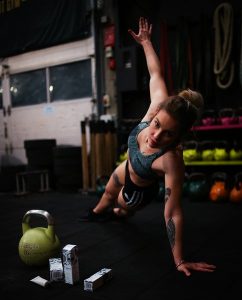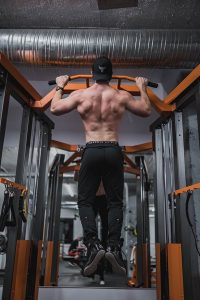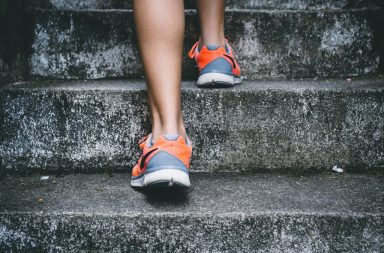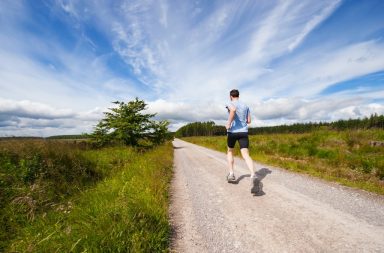Calisthenics is an increasingly popular form of workout and is an important part of building strength and fitness. If you want to get into calisthenics, you need to know where to start, and what to aim for. So, we’re going to look at what calisthenics is, and the easiest to hardest calisthenics moves to practice!
Even if you aren’t entirely sure what calisthenics is, chances are you’ve done it at some point. In fact, many of the exercises we use regularly in anaerobic workouts – which are extremely good for fat loss – come from calisthenics.
Of course, if you’re a beginner at calisthenics, or have been practicing a while and want to improve, you might be wondering what level you are working at – and how to improve?
Let’s take a look at the principles of calisthenics and get to know some of the easiest to hardest calisthenic moves!
What are calisthenics?
In its simplest terms, calisthenics is a form of strength training, where you use only your bodyweight.
So yes, squats, lunges and push-ups are all calisthenics – you’ve been practicing this form of fitness without even realising!

Photo credit: Hipcravo via Unsplash
Many people who are only just starting to look into calisthenics might think of this as a new fitness fad, but in actual fact it is one of the oldest forms of exercise. In fact, calisthenics has been practiced for centuries, because it requires the most minimal amount of equipment, and can be done whenever, and wherever you are!
So, why do people do calisthenics?
Well, there are lots of reasons to practice calisthenics. This form of fitness improves your strength, endurance, balance, agility, and flexibility – to name a few!
Impressive, right?
Calisthenics teaches you to have the most amount of control over your body, utilising your strength to build up your athletic abilities.
We’re going to take a look at some of the easiest to hardest calisthenic moves, to show you how this workout provides such a high level of fitness.
But first, let’s look at the benefits of practicing calisthenics!
What are the benefits of practicing calisthenics?
There, are actually loads of benefits to practicing calisthenics. Which explains why it has always been – and is again becoming – such a popular form of fitness!
So, what are the benefits?
No equipment needed
As we’ve already said, to practice calisthenics, you only need yourself!
This a huge benefit for a lot of people, as cost of gym memberships is not an issue. Not only that, but holidays and trips away – common reasons that people skip workouts – are also not a problem! You can practice calisthenics anywhere without any restrictions!
It is a full body workout
Yep, it is no exaggeration to say that calisthenics will work out all your muscles. And we mean ALL.
As a workout, particularly as a beginner, you might experience some serious DOMS (delayed onset muscle soreness). Why? Because calisthenics will get you moving muscles you didn’t even know you had! And this is a serious benefit to the workout. You won’t be favouring, or working certain muscles over others, it’s the whole hog.
Of course, to avoid DOMS make sure you cool down after workouts. Using a foam roller is a great way to stretch out legs and hips after tough workouts!
You will build strength and endurance
Calisthenics, whether you are doing the easiest or the hardest moves, will definitely get you building your strength. Because you are relying on your body weight as your resistance, you are effectively going to be starting with a heavier weight than if you were starting weightlifting with dumbbells.
All of this this requires focus. And calisthenics will improve your focus massively. In addition to that, these workouts will inevitably increase your endurance, as your practice and level of fitness progresses!
Of course, there are numerous benefits to calisthenics. All of which you will witness as you begin this form of fitness.
So, where do you start with calisthenics, and how do you progress?
Well, good question! Let’s take a look at the easiest to hardest calisthenics moves!
Easy calisthenics moves

Photo credit:
Pedro Araújo via Unsplash
Let’s be clear here, we are using the term ‘easy’ loosely.
If you are a beginner in calisthenics, you might not find these moves easy straight away. Or perhaps you have been doing these exercises for ages without even realising you were doing calisthenics!
Let’s see what they are.
Push-up
A standard, but not necessarily easy, push-up is a beginner’s move in calisthenics. Make sure you are practicing with good form, lowering your chest to the floor as far as possible.
Push-ups are a popular form of anaerobic exercise, and one of which you can easily fit into a home workout!
Burpee
You either love burpees, or you hate them. Either way, burpees are an easy calisthenic move. The quick rate in which you lower your chest to the ground, and then back up to a jump, gets your heart rate going and increases endurance.
Plank
This calisthenic move works your core, develops your abs, and works your arms. It does, of course build strength and focus, as anyone who has done plank will know!
Lunge
This is a common exercise but yes, it is also calisthenics. Practice lunge on both the left and right leg, swapping through your workout to build even muscle and strength. This exercise builds muscle mass in the legs and glutes.
Moderate calisthenic moves
If you’ve mastered the easy calisthenic moves, maybe you’re ready to level up! These calisthenics exercises are less well-known, and are more likely to target your lesser-used muscles.
Let’s take a look!
Clapping push-up
A standard push-up performed with a more explosive movement as you go up. You clap as you go up, and land back on your hands, ready to go back down into push-up. Not an easy calisthenic move, but will provide you with a sense of satisfaction once mastered!
L-sit
This is a common move seen in gymnastics. Sit on the floor with your legs out in front of you. Lift your body with your arms, keeping your legs out in an L-shape. This calisthenic move builds shoulder and arm strength.

Photo credit: Anastase Maragos via Unsplash
Pull-up
One of the few calisthenics moves that requires equipment. Practicing a pull-up strengthens the back muscles, the biceps and even builds core strength!
Pistol squat
This form of squat is difficult to master in the beginning. Lift one leg out in front and lower your other leg as far down as you can go. This move will build your balance, focus and definitely your leg muscles!
Hardest calisthenic moves
Ok, so if you’re ready to practice the hardest calisthenic moves, we’re impressed! These exercises will build some serious strength and muscle!
Are you ready for the hardest calisthenics moves?
One-handed handstand
This calisthenic move is exactly how it sounds. A one-handed handstand is incredibly difficult to master, but very impressive once you’ve done it! You might want somebody to hold your feet, and help you master this move. This exercise works on your balance, your core strength and of course, your shoulder muscles!
If you want to level this up – try and do a push-up whilst in your one-handed handstand!
V-sit
Like the L-sit, only as you lift yourself off the ground, your legs go upwards so that your body forms a V-shape. Not easy, but worth it!
One-armed chin up
Another calisthenic move that requires equipment, the one-armed chin up requires some serious strength and focus. Possibly one of the hardest calisthenic moves!
Planche
If you’re really into calisthenics, you might have seen this move posted on Instagram or forums.
The planche is an incredibly difficult calisthenic move to master. Another gymnastic move, the planche requires you to put your arms straight in front of you, lean on to them and lift your legs out straight behind you. Yes, not easy but looks incredible if you master it! The planche is a full body workout but requires strong core strength.
So, there you have it! The easiest to hardest calisthenic moves! As you can see, there are many benefits to practicing calisthenics. Whilst it might be a difficult form of fitness to master, the progression and level of fitness you can build certainly make it worth it!


